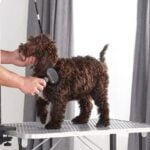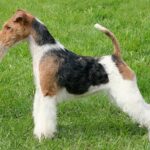Table of Contents
The Alaskan Malamute is a majestic and powerful breed, known for its strength, endurance, and friendly nature. Understanding the characteristics of Alaskan Malamutes can help potential owners provide the best care for these remarkable dogs. Here, we explore their physical traits, temperament, and essential care tips.

Physical Characteristics of Alaskan Malamutes
Alaskan Malamutes are large, robust dogs with a distinctive appearance. Key physical traits include:
- **Size:** Males typically stand 25 inches tall and weigh between 85-100 pounds. Females are slightly smaller, standing around 23 inches tall and weighing between 75-85 pounds.
- **Coat:** They have a thick, double coat with a dense, woolly undercoat and a coarse, water-resistant outer coat. Their coat comes in various colors, including gray, sable, black, and red, often with white markings.
- **Eyes:** Their almond-shaped eyes are brown, contributing to their intelligent and alert expression.
- **Tail:** Malamutes have a well-furred tail that curls over their back, resembling a plume.
- **Build:** They possess a sturdy, muscular build with strong bones, designed for heavy work and endurance.
Temperament and Personality: Characteristics of Alaskan Malamutes
Alaskan Malamutes are known for their friendly and affectionate nature. Key temperament traits include:
- **Friendly:** Malamutes are generally friendly and enjoy human companionship. They are often good with children and make excellent family pets.
- **Independent:** While they are friendly, Malamutes also have an independent streak. They require firm, consistent training to establish boundaries.
- **Playful:** These dogs are playful and energetic, requiring regular exercise to keep them happy and healthy.
- **Social:** Malamutes are social animals and prefer the company of people or other dogs. They can become bored and destructive if left alone for long periods.
- **Strong-Willed:** Their independent nature means they can be strong-willed and sometimes stubborn, requiring an experienced owner to handle them effectively.
Exercise Needs: Characteristics of Alaskan Malamutes
Alaskan Malamutes are high-energy dogs that require significant exercise to stay healthy and happy. Tips for meeting their exercise needs include:
- **Daily Exercise:** Ensure they receive at least an hour of vigorous exercise daily. Activities like hiking, running, and pulling sleds or carts are ideal.
- **Mental Stimulation:** Engage them in activities that challenge their mind, such as puzzle toys and obedience training.
- **Social Interaction:** Provide opportunities for socialization with other dogs and people to keep them mentally stimulated and well-adjusted.
Grooming and Maintenance: Characteristics of Alaskan Malamutes
Due to their thick double coat, Alaskan Malamutes require regular grooming. Key grooming tips include:
- **Brushing:** Brush their coat several times a week to remove loose hair and prevent matting. During shedding seasons, daily brushing may be necessary.
- **Bathing:** Bathe them as needed, typically every few months, unless they get particularly dirty or smelly.
- **Nail Trimming:** Regularly trim their nails to prevent overgrowth and discomfort.
- **Ear Cleaning:** Check their ears regularly for signs of infection and clean them to prevent wax buildup and infections.
- **Dental Care:** Brush their teeth regularly to maintain good oral hygiene and prevent dental issues.
Health Considerations: Characteristics of Alaskan Malamutes
Alaskan Malamutes are generally healthy dogs but can be prone to certain health issues. Key health considerations include:
- **Hip Dysplasia:** A common condition in large breeds, hip dysplasia can cause pain and mobility issues. Regular vet check-ups and maintaining a healthy weight can help manage this condition.
- **Hypothyroidism:** This condition affects the thyroid gland and can lead to weight gain and lethargy. Medication and regular monitoring can manage hypothyroidism effectively.
- **Cataracts:** Malamutes can be prone to cataracts, which can affect their vision. Regular eye exams can help detect and manage this condition early.
- **Bloat:** Also known as gastric torsion, bloat is a serious condition that requires immediate veterinary attention. Feeding smaller, more frequent meals and avoiding vigorous exercise after eating can help prevent it.
Training Tips: Characteristics of Alaskan Malamutes
Training Alaskan Malamutes can be challenging due to their independent and strong-willed nature. Effective training tips include:
- **Start Early:** Begin training and socialization early to establish good behavior patterns.
- **Use Positive Reinforcement:** Reward-based training methods, including treats and praise, are effective for Malamutes.
- **Be Consistent:** Consistency is key in training. Ensure all family members follow the same rules and commands.
- **Provide Mental Stimulation:** Keep training sessions engaging and mentally stimulating to hold their interest.
- **Seek Professional Help:** Consider enrolling in a professional training class or working with a canine behaviorist if needed.
Additional Resources on Alaskan Malamutes
For more detailed information and support, check out these trusted resources:
Understanding the characteristics of Alaskan Malamutes is essential for providing the best care and ensuring a happy, healthy life for these majestic dogs. By focusing on their physical traits, temperament, exercise needs, and health considerations, you can create a loving and supportive environment for your Malamute. For more resources on dog breeds and care, visit our Dog Care section.
FAQs
What is the typical lifespan of an Alaskan Malamute?
The typical lifespan of an Alaskan Malamute is between 10 to 14 years, though with proper care, some can live longer.
Are Alaskan Malamutes good with children?
Yes, Alaskan Malamutes are generally friendly and good with children, making them excellent family pets.
How much exercise does an Alaskan Malamute need?
Alaskan Malamutes need at least an hour of vigorous exercise daily, including activities like hiking, running, and pulling sleds or carts.
Do Alaskan Malamutes shed a lot?
Yes, Alaskan Malamutes have a thick double coat and shed heavily, especially during shedding seasons. Regular brushing helps manage their shedding.
Are Alaskan Malamutes easy to train?
Alaskan Malamutes can be challenging to train due to their independent and strong-willed nature. Consistent, positive reinforcement training methods are most effective.
What are common health issues in Alaskan Malamutes?
Common health issues include hip dysplasia, hypothyroidism, cataracts, and bloat. Regular vet check-ups and preventive care can help manage these conditions.
Conclusion
Understanding the characteristics of Alaskan Malamutes is key to providing the best care for these majestic dogs. By focusing on their physical traits, temperament, exercise needs, grooming, and health considerations, you can ensure a happy, healthy life for your Malamute. Consistent care, training, and love are essential to fostering a strong bond with your furry friend.
Get LIFETIME ACCESS to “My Private Prompt Library”: https://bit.ly/MTSPromptsLibrary
Looking for a custom GPT? or SEO services for your website? Hire me on Fiverr: https://bit.ly/Hire_me_as_a_Freelancer
============================================
Get LIFETIME ACCESS to “My Private Prompt Library”: https://bit.ly/MTSPromptsLibrary











